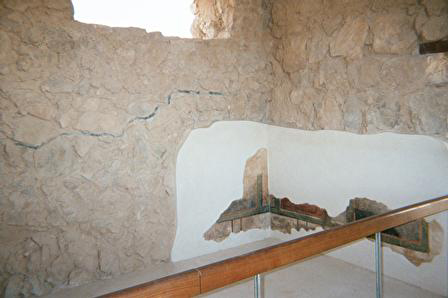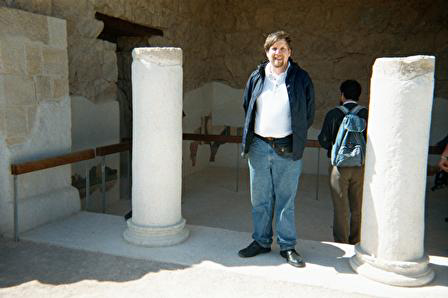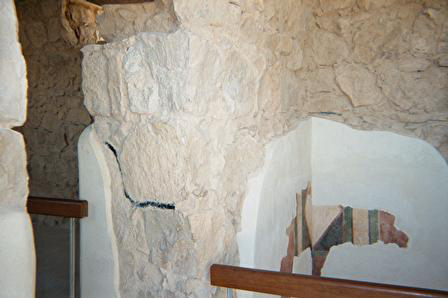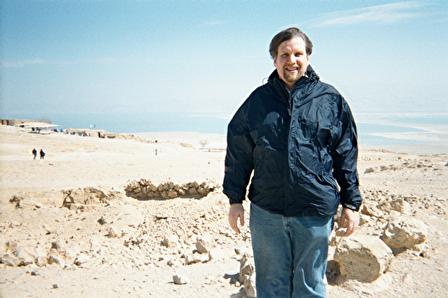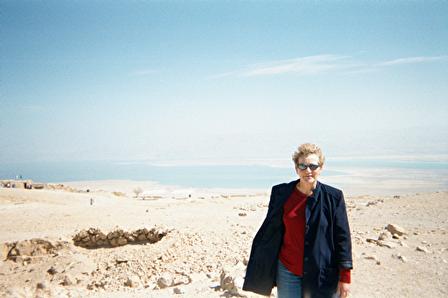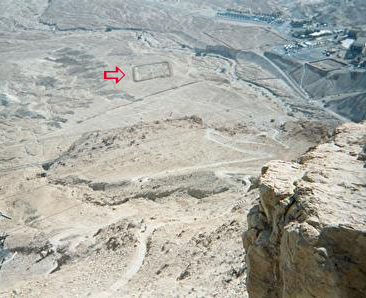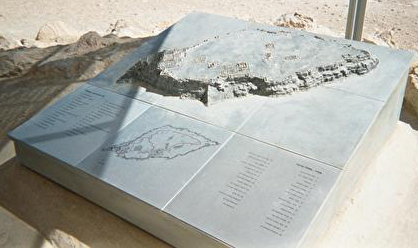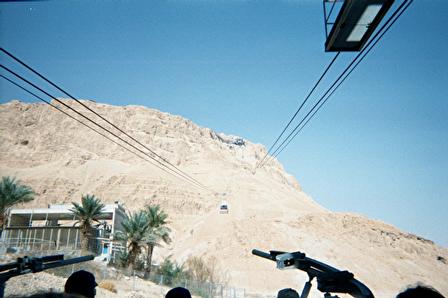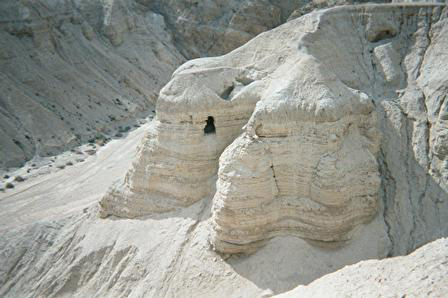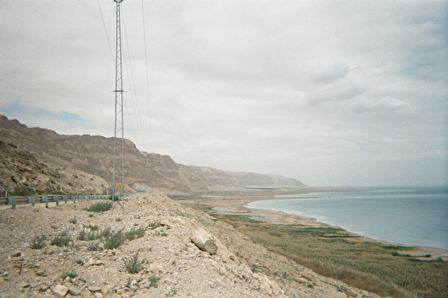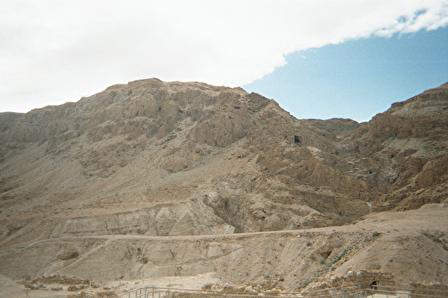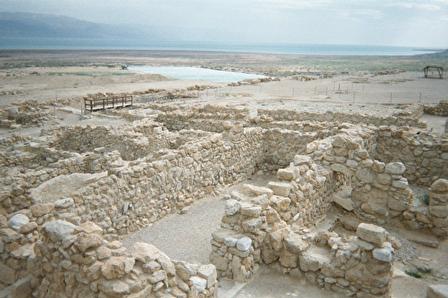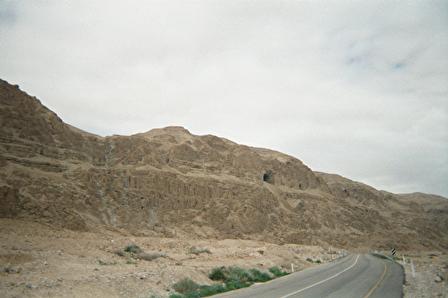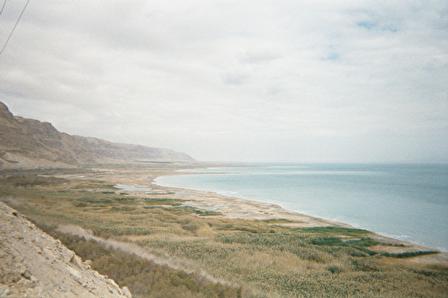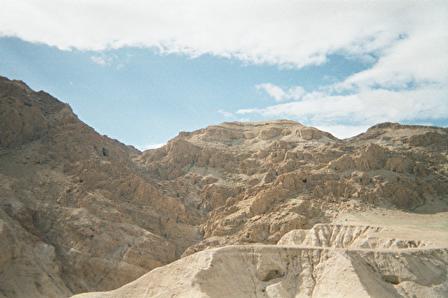The main thing that's exciting about this area of Israel is Massada. This is a huge chunk of stone on top of which Harod built a sort of Roman-era fallout shelter -- a place Harod could go if one of his enemies overthrew his government and hide out until the Romans saved him.
After Herod's death some Jewish malcontents took it over and used it as a base of operations to harass and annoy the Romans. The core of these malcontents were the Essenes; more about them in minute.
The Romans were a bad group to piss off (sort of like hiding in Ruby Ridge and waiting for the Feds to come get you). Massada was an incredible fortress with years of water and food out in the middle of a huge dessert.
The Romans were an incredible military force, however. They came in, built 5 "camps" (I looked at one of these "camps" -- they were quite large and permanent enough to last 2 thousand years) and a wall all the way around the fortress. A huge army of Jewish slaves built a 300 foot high ramp from the nearest point to the fortress. The Romans must have brought in massive amounts of water and food -- the nearest fresh water is 20 miles away.
When the ramp was finished the Romans charged up and set fire to the gates. As they burned the day ended and the Romans went back to their camps to finish the job the next day.
Up in Massada the thousand defenders (including women and children) had thought that God would protect them from the Roman legions. This belief had been the whole point of staying in Massada -- to be that portion of the Jewish faith and culture that would survive, with God's help, the Roman occupation. Now it was over and what happened next was absolutely unbelievable: the Jewish defenders killed their wives and children and then committed suicide. When the Romans marched into the camp the next day they found nothing but dead bodies. This was, more or less, the end of Jewish resistance to the Romans; the Jews were scattered all over the world (the Diaspora) and were without a homeland until Israel was founded in 1948.
Several miles from Massada is the place where the dead sea scrolls were found. Near there is an Essene compound. The Essenes were an extremely orthodox ("fanatical" probably wouldn't be too far out) Jewish sect that believed that God would smite their enemies (i.e. the Romans). There is some thought that John The Baptist was an Essene and some thought that the donkey that was provided to Jesus on which to ride into Jerusalem was provided by Essenes.
